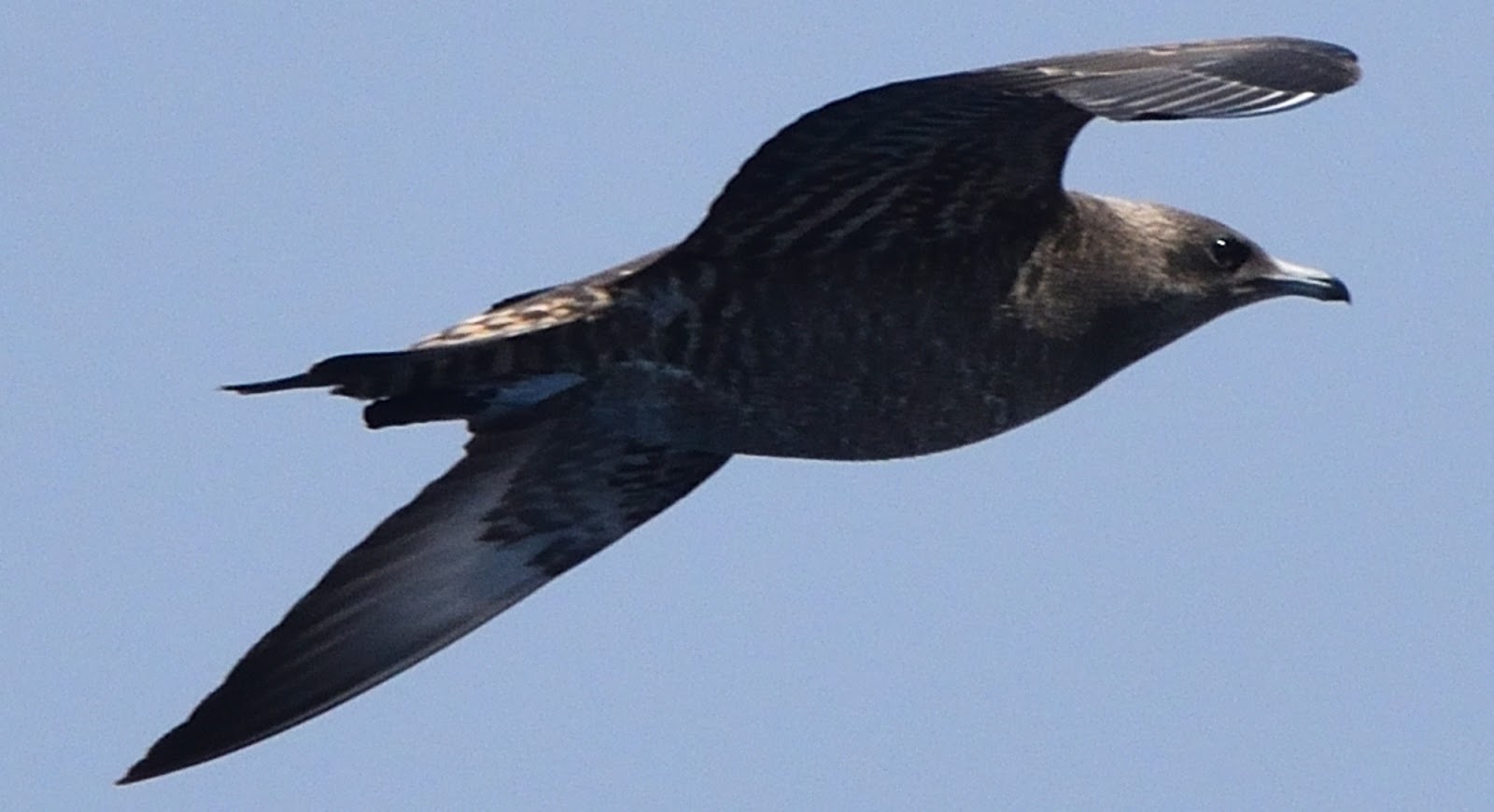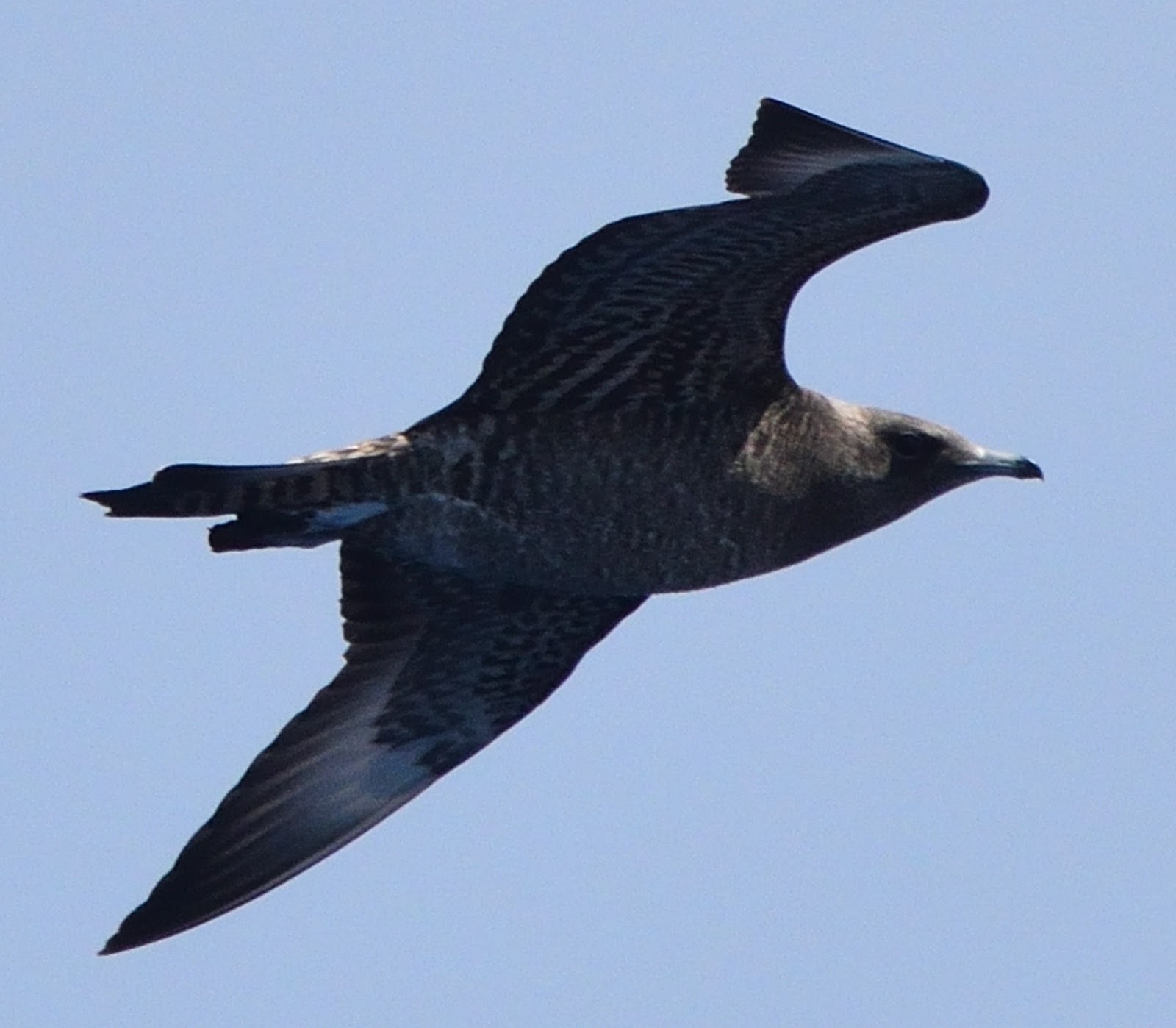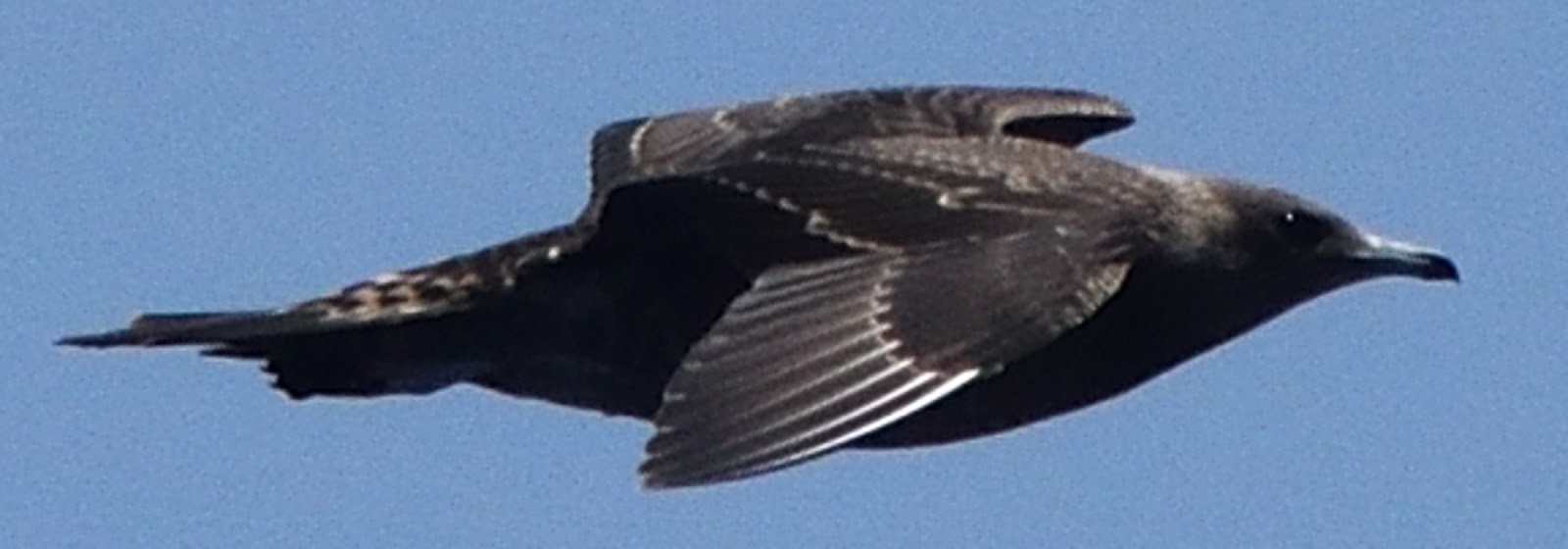Jaegers aren't encountered often in Louisiana, and when they are, they're rarely seen well or for long. Couple that with the difficulty of telling the jaegers apart and IDing jaegers becomes even more challenging. A good case in point is a jaeger that was found on last weekend's deepwater pelagic way out of Venice. The jaeger was first seen harassing a Sooty or Bridled tern, a good clue for a Parasitic, but the jaeger was small and very agile, good for Long-tailed.
Luckily
the boat was very fast and was able to catch up to and travel
alongside the jaeger long enough for a series of photos to be
taken, but the speed and the waves made it almost impossible to
study the bird through binos or even naked eye. Initial looks at
the photos showed what appeared to be rounded central tail
feathers extending beyond the rest of the tail, a good mark for
juvenile Long-tailed but subject to further review.
Fortunately a few pictures also showed buffy fringes to the upperparts.
These two marks made us put the bird into the Parasitic column. These fieldmarks backed up what appeared to be a small-headed look to the bird, a good but relatively subjective fieldmark, and the more solid but-not-always-easy-to-see number of white primary shafts..
The fact that past jaeger reports sometimes relied on soft
fieldmarks and observer impressions hint that field guides can
create a false sense that young Long-tailed Jaegers are easier to
tell from Parasitics than they really are. However, events like
this point out how difficult it is to separate juvenile Parasitic
and Long-tailed jaegers and emphasize how important photos--lots
of them, sometimes--are to clinching an ID.
More photos of this beautiful bird:
















No comments:
Post a Comment